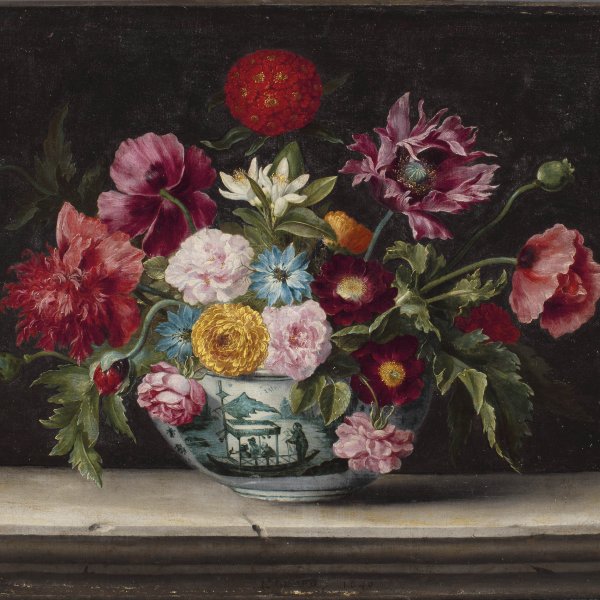Jacques Linard
París (?), c. 1600-Paris, 1645
Linard was a 17th-century French painter who specialised in still lifes of flowers and fruit. He was born around 1600, probably in Paris, where he may have first trained but almost nothing is known of this period of his life. Linard is documented in Paris for the first time in 1626, living in the Saint-Germandes- rès quarter, which was the home of many of the capital’s still-life painters including Louise Moillon and Lubin Baugin, as well as other Flemish artists who specialised in this genre. The first still life that can be securely attributed to Linard dates from 1627. In 1631 he was appointed Peintre et Valet de Chambre du Roi to Louis XIII, a post that gave him a certain autonomy and financial independence for the remainder of his career. Linard’s output primarily consists of fruit and flower paintings, and together with Louise Moillon he was one of the first artists to include female figures in this genre, surrounding them with still-life motifs. Compositions of this type include Woman with Flowers and Woman with Fruit (both private collection, Paris). From the outset his style reveals the marked influence of the Flemish school, particularly Jan Brueghel’s still lifes, but his works are also imbued with the elegance characteristic of French painting in this genre. Along with his contemporaries Moillon and Pierre Bouclé, he is one of the great figures within this genre in France.
Linard’s late works are more allegorical, for example, The Five Senses (Musée des Beaux-Arts, Strasbourg) of 1638, in which fruit, flowers, a musical box, mirror, set of cards and some coins evoke the five senses and in which the perishable elements contrast with the permanent ones, symbolising the passing of time.
Linard’s late works are more allegorical, for example, The Five Senses (Musée des Beaux-Arts, Strasbourg) of 1638, in which fruit, flowers, a musical box, mirror, set of cards and some coins evoke the five senses and in which the perishable elements contrast with the permanent ones, symbolising the passing of time.





